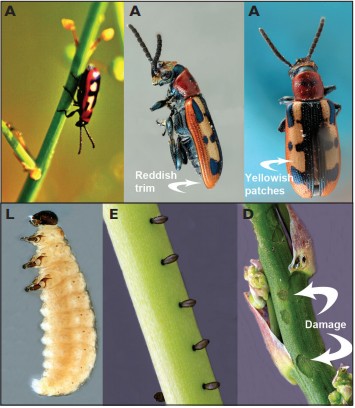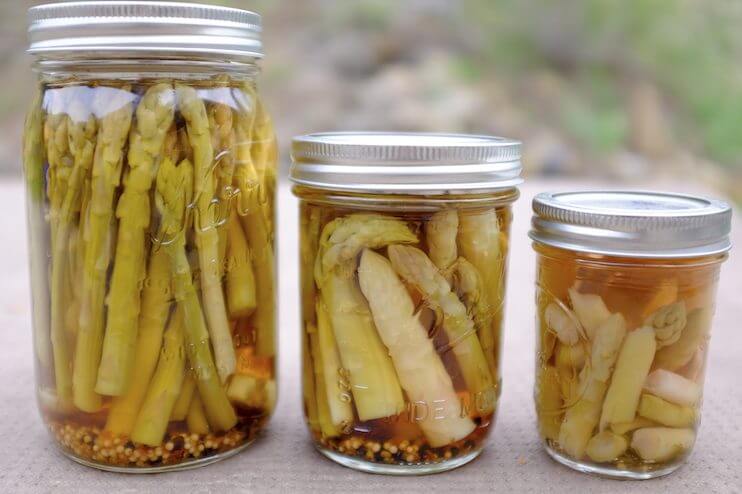How to Grow Asparagus Plants: From Planting to Harvesting
The journey from planting to harvesting may require patience, but the reward of fresh, tender spears straight from your backyard is unparalleled. Let me guide you through the exciting process of growing asparagus, sharing tips and tricks I’ve learned along the way.
Choosing the Perfect Spot:
Selecting the right location is crucial for thriving asparagus plants. Here’s what you need to consider:
Sunlight: Asparagus loves full sun, so choose a spot that gets at least 6-8 hours of direct sunlight daily.
Soil drainage: Well-draining soil is essential. Asparagus roots don’t tolerate standing water.
Space: Plan for a dedicated bed, as asparagus is a long-term investment.
Soil pH: Aim for slightly acidic to neutral soil (pH 6.0-7.0).

Preparing the Soil
Asparagus plants have deep roots and will occupy the same spot for years, so thorough soil preparation is key:
Remove all weeds and grass from the area.
Dig the soil to a depth of 12-15 inches.
Mix in plenty of organic matter like compost or well-rotted manure.
Add a balanced fertilizer according to soil test recommendations.
Planting Asparagus
You have two options for starting asparagus: seeds or crowns. While seeds are cheaper, crowns (1-year-old plants) give you a head start. Here’s how to plant asparagus crowns:
Dig trenches 12-18 inches wide and 6-8 inches deep.
Space trenches 4-5 feet apart.
Create small mounds of soil in the trench, spaced 12-18 inches apart.
Place crowns on top of the mounds, spreading roots evenly.
Cover with 2-3 inches of soil.
As plants grow, gradually fill in the trench.

Caring for Your Asparagus Plants
Proper care ensures healthy, productive asparagus plants:
Watering: Keep soil consistently moist but not waterlogged.
Mulching: Apply a 2-3 inch layer of organic mulch to retain moisture and suppress weeds.
Fertilizing: Feed plants annually in early spring with a balanced fertilizer.
Weed control: Remove weeds regularly to prevent competition.
Winter care: Cut back dead foliage in late fall and apply a layer of mulch for protection.
Harvesting Your Homegrown Asparagus
The wait is finally over! Here’s how to harvest your asparagus:
First-year plants: Don’t harvest; let them establish strong root systems.
Second-year plants: Harvest lightly for 2-3 weeks.
Third-year and beyond: Enjoy a full harvest season of 6-8 weeks.
Cut spears at ground level when they’re 6-8 inches tall and about as thick as a pencil.
Stop harvesting when spear diameter decreases to less than 3/8 inch.
Read also: https://plantgrowup.com/how-to-grow-an-avocado-plant/
Common Asparagus Pests and Diseases
Stay vigilant for these potential issues:
Asparagus beetles: Handpick or use organic insecticides.
Fusarium root rot: Avoid by planting in well-draining soil.
Asparagus rust: Choose resistant varieties and ensure good air circulation.

Companion Planting for Asparagus
Enhance your asparagus patch with these beneficial companions:
Tomatoes: Deter asparagus beetles.
Parsley: Attracts beneficial insects.
Basil: Improves growth and flavor.
Marigolds: Repel pests and add color to your garden.
Asparagus Varieties to Consider
Explore these popular asparagus cultivars:
Jersey Knight: All-male hybrid with high yield and disease resistance.
Purple Passion: Sweeter flavor and tender texture.
Mary Washington: Heirloom variety with excellent flavor.
Apollo: Heat-tolerant variety for warmer climates.

Cooking with Fresh Asparagus
Now that you’ve grown your own asparagus, try these delicious preparation methods:
Grilled: Brush with olive oil, season, and grill for 5-7 minutes.
Roasted: Toss with olive oil and roast at 400°F for 12-15 minutes.
Steamed: Steam for 3-5 minutes until tender-crisp.
Raw: Thinly slice and add to salads for a crisp texture.
Preserving Your Asparagus Harvest
Extend the enjoyment of your homegrown asparagus:
Freezing: Blanch spears for 2-3 minutes, then freeze in airtight containers.
Pickling: Create tangy pickled asparagus for a unique treat.
Dehydrating: Dry spears for use in soups and stews.

Conclusion:
Growing asparagus is a rewarding experience that connects you with the rhythms of nature and provides a bountiful harvest for years to come. As you nurture your asparagus patch, you’ll develop a deeper appreciation for this delicious vegetable and the patience required to cultivate it.
Remember, the key to success lies in proper site selection, thorough soil preparation, and consistent care. With time and attention, you’ll be rewarded with a thriving asparagus bed that becomes the envy of your neighborhood.
People also ask:
How long does it take to grow asparagus from seed?
It takes about 3-4 years to grow harvestable asparagus from seed.
Can I grow asparagus in containers?
While possible, it’s challenging due to the plant’s deep root system. Use large, deep containers if attempting.
How many asparagus plants do I need per person?
Plant 10-15 crowns per person for a good supply of fresh asparagus.
Can I plant other vegetables in my asparagus bed?
It’s best to keep asparagus separate due to its long-term nature and specific care requirements.
How do I know when my asparagus is ready to harvest?
Harvest spears when they’re 6-8 inches tall and about as thick as a pencil.
Read also: https://plantgrowup.com/how-to-grow-strawberry-plants/